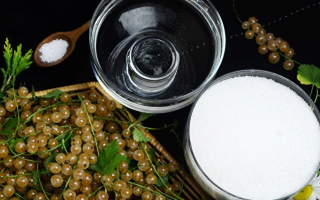Content
- 1 Chemical composition of white currant
- 2 Nutritional value and calorie content of white currant
- 3 Why is white currant useful for the body
- 4 At what age can white currants be given to children
- 5 Can white currants be pregnant and lactating
- 6 The benefits of juice, fruit drink and white currant wine
- 7 White currant face mask
- 8 Harm of white currant and contraindications
- 9 Norms and features of the use of white currant
- 10 Harvesting white currants for the winter
- 11 Conclusion
Connoisseurs of traditional medicine call currants a berry of health and youth. While white berries are not as popular in garden plots as black and red berries, they are equally healthy and are also fortified with vitamins. From their pulp, aromatic jams, compotes, tinctures and wines are obtained, and the leaves are used as tea leaves. So what are the true benefits and harms of white currant for human health? Everything in order.
Chemical composition of white currant
White currant is a shrub of the gooseberry family, artificially bred by breeders. The chemical composition of its fruits is rich in nutrients, micro and macro elements such as:
- Water (75-85%, depending on the degree of maturity).
- Monosaccharides. Fructose and glucose predominate (from 3 to 6%).
- Dietary fiber (3-4%);
- Vitamins A, B, C, E, P;
- Pectin (0.68-1%);
- Mineral components, represented by organic acids and fiber (on average, their concentration is no more than 2% of the total composition);
- Macro- and microelements, among which are iron, potassium, calcium, magnesium, sodium, iron and phosphorus;
- Saturated fatty acids (0.1%).
Nutritional value and calorie content of white currant
Nutritional value of white currant relative to other types of berries and the average daily human intake:
|
|
White |
Black |
Red |
Daily rate |
|
Calorie content |
42 kcal |
44 kcal |
40 kcal |
1800 kcal |
|
Protein |
0.5 g |
1 g |
0.7 g |
84 g |
|
Fats |
0.2 g |
0.4 g |
0.2 g |
46 g |
|
Carbohydrates |
8 g |
7 g |
9 g |
112 g |
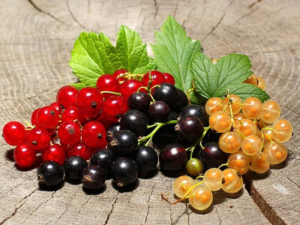
Based on the data in the table, we can conclude that all types of currants have almost the same nutritional value.
Why is white currant useful for the body
The benefits of white currant for the human body are invaluable. Its pulp is eaten raw and processed, used in cosmetology. Pectin is of great importance. It has a beneficial effect on blood composition, removes salts and toxins, and lowers cholesterol levels. Such properties of white currant are useful for diabetes mellitus, as well as for people with heart problems and overweight living in industrially polluted areas with poor ecology.
In addition to pectin, currants have a rich vitamin composition. Due to the high content ascorbic acid it benefits the digestive, nervous and endocrine systems. In addition, according to the latest research, ascorbic acid plays an important role in the prevention of cancer. Under the influence of vitamin C, the metabolism of cancer cells is disrupted, which significantly slows down their development.
The presence of organic acids in the pulp is equally beneficial to the body.Potassium has the ability to stabilize water balance, and calcium is an important component of tissue fluid that improves the structure of bones and teeth.
In addition to these pronounced properties, a combination of organic acids makes white currant useful for such body functions:
- cleansing blood vessels;
- normalization of the digestive system;
- strengthening liver cells;
- excretion of bile;
- increasing resistance to viruses and infections;
- improvement of vision;
- curing iron deficiency anemia;
- improving the functioning of the reproductive organs;
- prevention of cataracts.
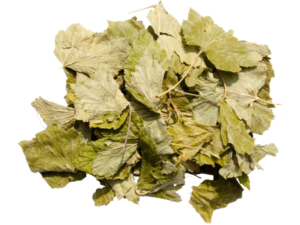
The medicinal and nutritional properties make the white currant a valuable berry crop. However, not only the pulp is beneficial, but also the leaves. The fragrant leaves have a bactericidal effect, therefore, in folk medicine, they have long been used as raw materials for medicinal tinctures, decoctions, ointments and tea.
The benefits of white currant for women
Currant is especially popular among women as it is a dietary product. Low-calorie and easily digestible, it helps to remove toxins, salts, cholesterol from the body. Currant is considered a berry of youth. It benefits the skin of the face and is widely used in home cosmetology. Due to the high concentration of vitamins, masks from its pulp help maintain skin elasticity, reduce the intensity of age-related pigmentation and get rid of inflammatory rashes. White currant seeds are also useful for the skin. They are added to peels and scrubs, they are made into oil, which is part of anti-aging and tonic cosmetic products.
Why is white currant useful for men
White currant cleanses the urinary tract, regulates kidney function and tends to increase blood flow. All this is the key to good male health and high sexual activity.
At what age can white currants be given to children
White currant berries do not have dyes that can harm the child's body. That is why they can be given to children already in the first year of life, from 8-10 months. The best option for eating is a fresh berry, just picked from a bush. It is in this form that the pulp retains its nutritional properties and natural taste as much as possible.

Can white currants be pregnant and lactating
During pregnancy and lactation, women are required to especially carefully monitor the diet. Despite the fact that white currants are useful for both breastfeeding and pregnancy, they must be used carefully. A high concentration of ascorbic acid can cause an unexpected reaction of an immature child's body and cause harm, which is often caused by individual intolerance. As mentioned earlier, the introduction of any berries into the diet should be done gradually.
The benefits of juice, fruit drink and white currant wine
Currants are eaten both fresh and processed. The high content of pectin (a gelling agent) makes it possible to make berry-based jams and jams. They are also used to make compotes, fruit drinks, juices and wines.
Even after heat treatment, berry pulp retains some of its useful properties, and the vitamin C contained in it is a good preservative that ensures the product has a long shelf life. Thus, white currants can give up their healing properties not only after harvesting, but also during the winter, when the body needs additional vitamins.
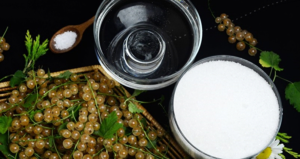
White currant face mask
The fruits and leaves of the plant are widely used in cosmetology. The popularity of the white variety is due to the lack of a coloring component in them, which is a hypoallergenic substance that, penetrating into the upper layers of the skin, is capable of causing harm to it. The pulp of the berries fights wrinkles, improves skin elasticity and accelerates the regeneration of dermal cells, thereby slowing down aging. The recipe for a homemade mask is extremely simple - apply berry puree to your face and wait 10-15 minutes. This time is enough for the nutrients to penetrate into the upper layers of the skin and begin to act. To make the mask, you can use both fresh berries and frozen ones.
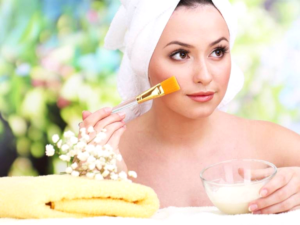
Harm of white currant and contraindications
In addition to the obvious benefits, white currants can be harmful, so there are some contraindications. Nutritionists do not recommend it to the following categories of people:
- suffering from thrombophlebitis (vitamin K increases blood clotting);
- after a stroke;
- with acute gastritis (due to the effect on an increase in gastric acidity);
- children under 8 months of age (not recommended due to the high content of vitamin C and the likelihood of individual intolerance to an unformed child's body).
Norms and features of the use of white currant
Excessive consumption of currants can be harmful to health. Berries are best eaten in small portions, since a large amount can increase the acidity of the stomach and irritate the mucous membranes. The recommended daily allowance is 0.5-1 kg.
Harvesting white currants for the winter
The best way to store currants in winter is pectin harvesting. It can be created from any kind of white currant and is a canned berry, grated with sugar. Some sources may refer to the billet as "jelly" because the high pectin content gives it a thick, jelly-like consistency. The mass is eaten both independently, and they make jam, compotes, tinctures, marmalade from it.
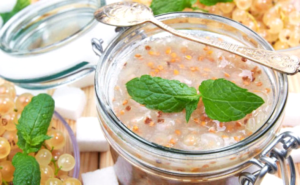
For cooking you will need:
- currants - 1 kg;
- water - 250 ml;
- sugar - 300 gr.
Cooking method:
Pour the berries into a saucepan and pour a glass of water.
The mass is pressed by hand until a homogeneous consistency is obtained.
The workpiece is heated over medium heat until boiling.
After warming up, the mass is covered with sugar and mixed (you can use a mixer).
Boil over medium heat for 10-15 minutes.
The finished jelly is poured into a jar and rolled up.
Video recipe for winter preparation:
Conclusion
Currants are a huge storehouse of biological substances necessary for the human body. Having studied its main properties, one can draw a certain conclusion regarding the benefits and harms of white currant - everything should be in moderation. And vitamins are no exception.

